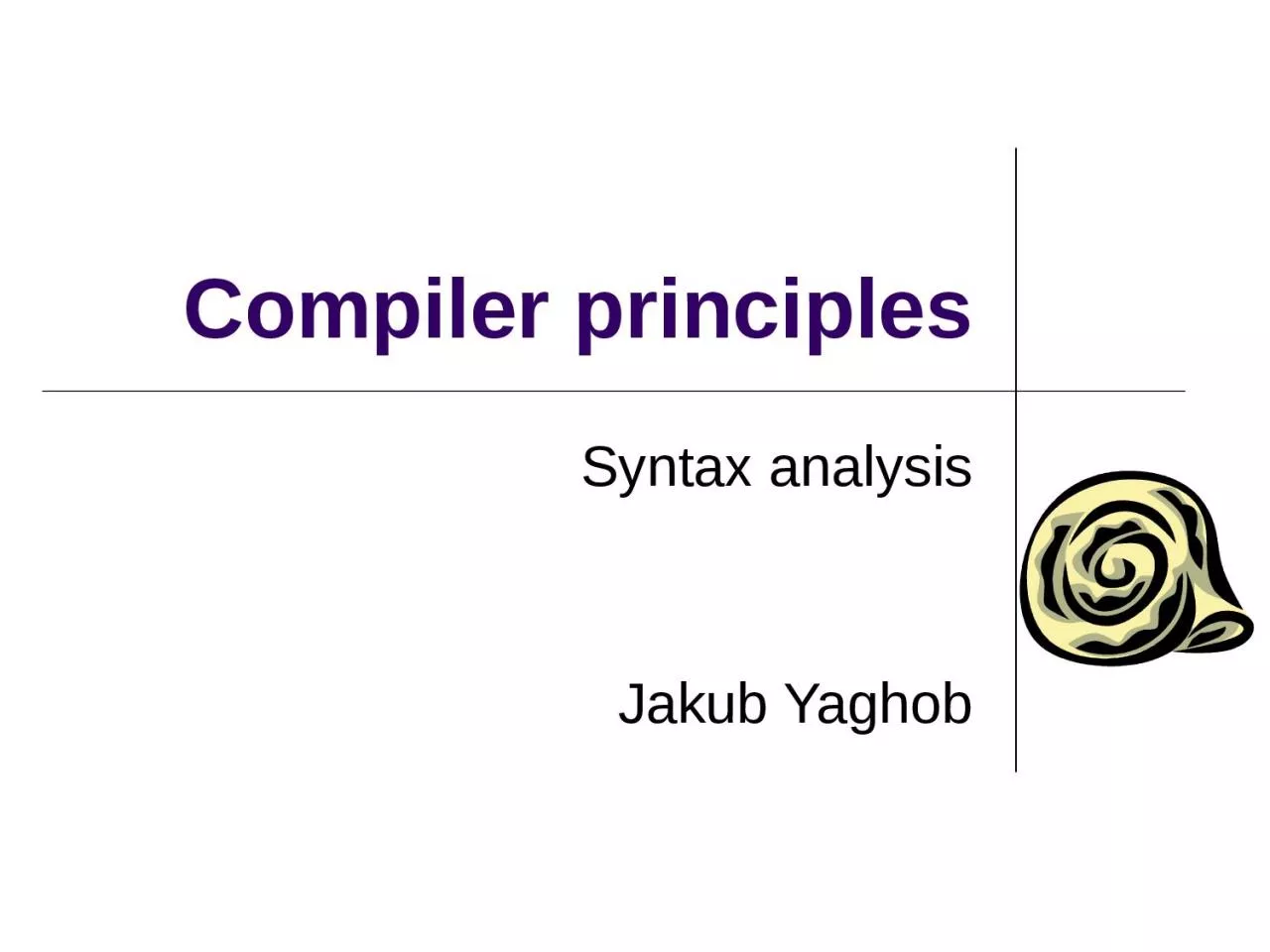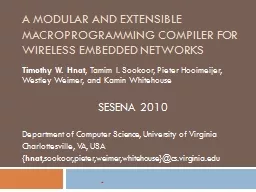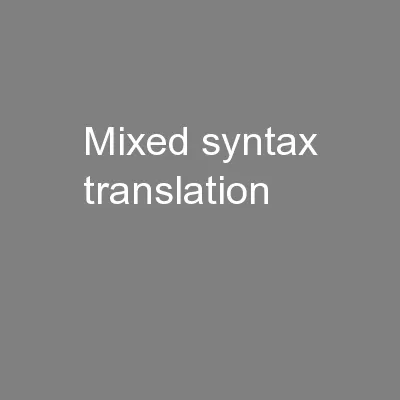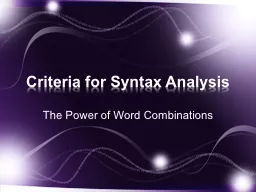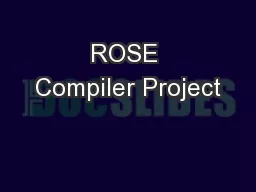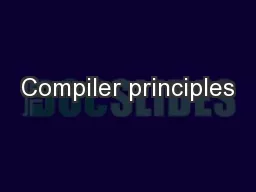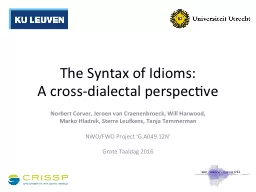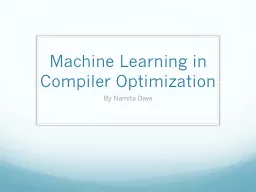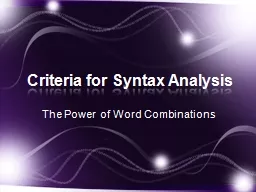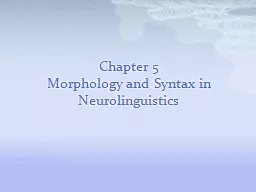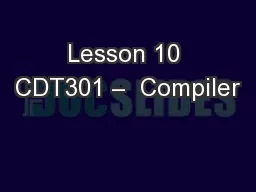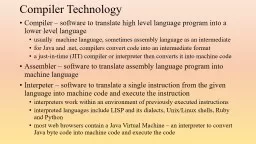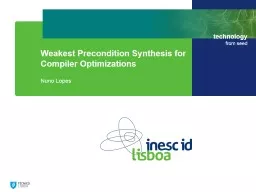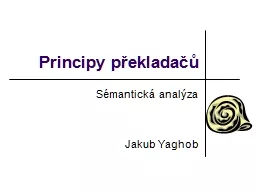PPT-Compiler principles Syntax analysis
Author : ida | Published Date : 2024-03-13
Jakub Yaghob Get next token Syntax analysis The main task Decide whether an input word is a word from an input language Other important tasks Syntaxdirected translation
Presentation Embed Code
Download Presentation
Download Presentation The PPT/PDF document "Compiler principles Syntax analysis" is the property of its rightful owner. Permission is granted to download and print the materials on this website for personal, non-commercial use only, and to display it on your personal computer provided you do not modify the materials and that you retain all copyright notices contained in the materials. By downloading content from our website, you accept the terms of this agreement.
Compiler principles Syntax analysis: Transcript
Download Rules Of Document
"Compiler principles Syntax analysis"The content belongs to its owner. You may download and print it for personal use, without modification, and keep all copyright notices. By downloading, you agree to these terms.
Related Documents

